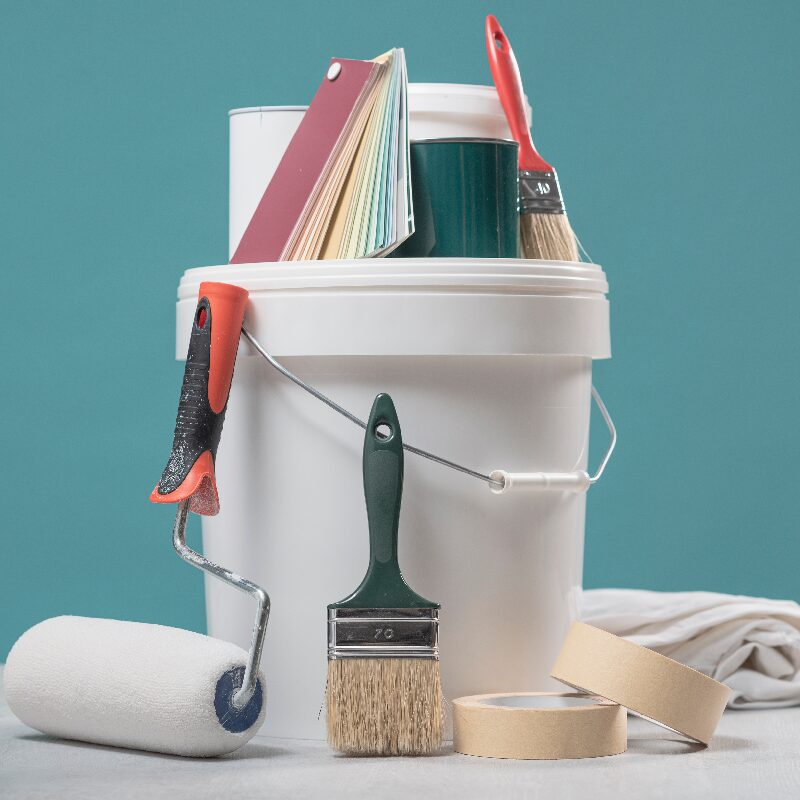
6 Benefits of Eco-Friendly Paint.
Looking to freshen up your space while doing good for the planet? Eco-friendly paint is your answer! Not only does it contribute towards a healthier environment, but it also has many benefits for your home. For any renovation project, choosing environmentally conscious paint brings quality, vibrancy, and sustainability to your home upgrade. In this post, we’ll explore what exactly ‘eco-friendly’ paint is, before diving into the top 6 benefits of choosing it for your project.
What Is Eco-Friendly Paint?
Generally speaking, eco-friendly paint is any option that has a minimal environmental and ecological impact. Compared to conventional paint, it is different in three main ways: ingredients, manufacturing process, and waste management. Let’s explore each of these in a little more detail…
Natural Ingredients
Conventional paint usually contains all kinds of chemicals, many of which are toxic and can cause harm not only to the environment but also to your health. It’s not uncommon to find a concoction of plastics, microplastics, synthetic dyes, chemical preservatives, or even ammonia in your typical tin of paint. Many of these chemicals can be classed as VOCs (or volatile organic compounds), meaning that they can evaporate into the air, even indoors. These pollutants can trigger adverse health conditions, including breathing problems, general irritation or even cancer.
More eco-friendly paint, on the other hand, contains natural ingredients such as milk proteins, balsam or clay, all of which are healthier and contribute positively to reducing environmental impact as VOC levels are kept low. Many eco-friendly paints are also water based, which is generally kinder for the planet than oil-based counterparts as they require fewer chemicals to clean up when you’re done painting!
Low-Carbon Manufacturing Process
As you might expect, creating the chemicals and synthetic components of conventional paint requires a much more damaging manufacturing process. Oil and solvent based paints undergo more transportation and processing, meaning that harmful emissions are high. Consuming less energy than conventional paint, using eco-friendly alternatives will therefore significantly decrease your carbon footprint.
Recyclable Waste
Since the ingredients of eco-friendly paints are less toxic and even sometimes biodegradable, they are much easier to dispose of responsibly. Many companies, such as Farrow & Ball, will extend their sustainability initiatives to packaging, meaning that if your paint is eco-friendly, your tin most likely is too.
Some eco-friendly paints can even be composted, but for those that can’t, you are usually able to harden it using sand or soil and then take it to a recycling centre where a new life awaits! Conventional paint, especially if you have used paint thinner or white spirit alongside it, is often classified as hazardous waste, making it much more difficult to dispose of properly.
6 Benefits of Choosing Eco-Friendly Paint
As paint technology continues to evolve, eco-friendly options are now easier than ever to incorporate into your DIY projects. With leading brands embracing sustainable practices, environmentally responsible paint is increasingly becoming the industry standard, meaning that you can make the ethical choice without sacrificing on quality. So, from safer ingredients to first-class finishes, here are 6 key benefits of eco-friendly paint.
1. Better Air Quality
When the VOCs contained in conventional paint evaporate, the air quality of the space is significantly decreased. If inhaled, these fumes pose problems, particularly for vulnerable individuals with conditions like asthma who may find it harder to breathe. Even those without additional issues can experience headaches, nausea, and dizziness as a result… not what you want for your home.
Also, breathable paints that use natural ingredients allow excess moisture to escape from your walls. Mould and fungus are therefore less likely to grow, helping to keep the air clear of respiratory irritants.
2. Lower Carbon Footprint
Due to their more sustainable methods and materials, eco-friendly paints are a much greener choice for those trying to reduce their environmental impact.
In addition, many brands have taken steps to minimise CO2 emissions for each stage of their supply chain. Transportation, storage, and packaging are key areas to look out for! For example, they may use locally sourced materials to reduce the need for long-distance travel or create products with a longer shelf life to limit wasted stock.
3. Easy to Clean
We all know the post-decorating struggle to get paint out of your rollers and brushes, but eco-friendly paints make the process much simpler and safer. Since the base of these products is often water, there is less need for toxic cleaning products which add more chemical waste. Most paints can be cleaned simply with soap and water.
4. Range of Uses
Eco-friendly paints go beyond walls. Regardless of whether you’re painting outdoor furniture, pursuing a bathroom renovation, or simply updating aesthetics, there is an environmentally conscious option out there. Some products are even formulated to offer the same level of specialised performance – such as anti-mould or UV-resistance – without the ecological cost.
5. Child Friendly
Children have more sensitive systems than adults and so are more susceptible to the negative impacts of conventional paint. Curious as they are, children are also more likely to touch (and taste!) painted walls. Decorating spaces like nurseries with eco-friendly products can help to give parents peace of mind, wherever the little one is playing.
Some companies also offer toy-safe paint, meaning that you can revitalise much-loved toys without the risk of exposing them to harmful chemicals. Be sure to double check the credentials of your specific paint first though!
Not to mention, the durability and toughness of eco-friendly paint will ensure that your spaces withstand anything children can (literally) throw at them.
6. Exceptional Finish
Choosing eco-friendly paint doesn’t mean that you sacrifice on quality. Far from it! Natural pigments are hardwearing and rich in hue, often requiring just one coat. They are also available in a range of high-quality finishes, from matt to high gloss, offering beautiful results for any project. With enduring performance, regular touch-ups aren’t a worry either!
Eco-friendly Paint: Actions You Can Take
So, when you’re next shopping for paint, stay on the lookout for premium environmentally friendly options. Consider the ingredients, breathability, VOC content, where and how it is made, and overall quality. You might be surprised by what you find!
For any left-over paint, consider donating to community organisations that can help to redistribute it to people in need. Some eco-friendly paint companies in the UK may even offer a service to recycle extra paint, such as Little Greene’s Re:Mix scheme, which prevents as much as 60,000 litres of materials going to waste each year.
Alternatively, make sure to source, and dispose of, your paint responsibly. Even if your paint isn’t directly eco-friendly, taking steps like shopping local or recycling your tins all make a difference!
Share the love.
Related
You May Also Like

6 Ways to Combat Fatigue and Get Your Energy Back
November 3, 2022
Gingerbread House Recipe & Templates
September 26, 2019



